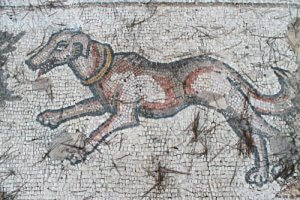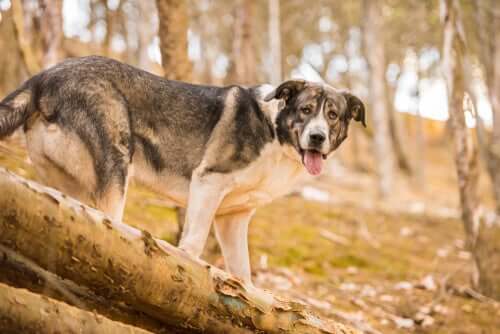Some Extinct Dog Breeds You Should Learn About


Written and verified by the biologist Paloma de los Milagros
We don’t know for certain the exact number of extinct dog breeds. There are many reasons a certain breed may go extinct, too. Some fall out of use as work animals, and others are forgotten. But thanks to old documents and science, we’ve been able to get an idea about some of these breeds.
All throughout history, humans have been one of the main factors in whether wild and domestic animals survive. In the case of domestic animals, the evolution of work and the idea of pets have been crucial.
On the negative side, sometimes we bring over exotic species. Not only do these compete for resources with other animals, but, in many cases, they also bring along illnesses that the native species have never encountered before.
Right now, climate change is a major threat to millions of species around the world. This could, unfortunately, add to the tally of extinct dog breeds. But for now, we’re going to focus on the ones that have already become extinct.
Some extinct dog breeds from ancient times
The Molossus
The Molossus is probably the ancestor of what we now know as mastiffs. This is one of the oldest we have records of: both Virgil and Aristotle mention it. But historians and other experts haven’t agreed on their relationship to humans, and whether we used them for protection or hunting.

The African Hairless Dog
As its name suggests, this was a breed with no hair. It also tended to have a high body temperature, and people apparently used them as a kind of blanket. People believed they had healing properties. These are an ancestor to other modern hairless dogs. There’s a preserved specimen in the Walter Rothschild Museum in England, proving their existence.
Some extinct dog breeds from modern times
The Kurī
The first on our list is a dog that looked a lot like a fox, with some very sharp teeth. Their presence in New Zealand goes back to the 18th century, when colonizers arrived on their big canoes. However, they didn’t make it through the 19th century, because of it being mixed with European breeds. In other words, the purebreds simply faded out.
The Talbot
Historical documents from the 17th century suggest that this dog is the ancestor of both beagles and bloodhounds. Talbot hounds were so important that some pubs and taverns in England still have a picture of this breed outside their buildings.

The Paisley Terrier
The name of this breed comes from its place of origin: Paisley, Scotland. They had long, silky fur, and became one of the most popular show dogs of the 18th century. They ultimately disappeared after being used to breed the Yorkshire terrier. People found the new breed more aesthetically pleasing.

The Turnspit Dog
This breed had one of the most unusual jobs in the long history of dogs as domestic animals. Because they had such long bodies and short legs (similar to the modern sausage dog), they were able to run around a wheel that would turn the meat over a fire to cook evenly.
Of course, with advances in technology, their main job ended up becoming obsolete. This is what ultimately led to their extinction.
These are just a few of the breeds that have become extinct over the years, and here is an article for you about other animals in danger of extinction.
We don’t know for certain the exact number of extinct dog breeds. There are many reasons a certain breed may go extinct, too. Some fall out of use as work animals, and others are forgotten. But thanks to old documents and science, we’ve been able to get an idea about some of these breeds.
All throughout history, humans have been one of the main factors in whether wild and domestic animals survive. In the case of domestic animals, the evolution of work and the idea of pets have been crucial.
On the negative side, sometimes we bring over exotic species. Not only do these compete for resources with other animals, but, in many cases, they also bring along illnesses that the native species have never encountered before.
Right now, climate change is a major threat to millions of species around the world. This could, unfortunately, add to the tally of extinct dog breeds. But for now, we’re going to focus on the ones that have already become extinct.
Some extinct dog breeds from ancient times
The Molossus
The Molossus is probably the ancestor of what we now know as mastiffs. This is one of the oldest we have records of: both Virgil and Aristotle mention it. But historians and other experts haven’t agreed on their relationship to humans, and whether we used them for protection or hunting.

The African Hairless Dog
As its name suggests, this was a breed with no hair. It also tended to have a high body temperature, and people apparently used them as a kind of blanket. People believed they had healing properties. These are an ancestor to other modern hairless dogs. There’s a preserved specimen in the Walter Rothschild Museum in England, proving their existence.
Some extinct dog breeds from modern times
The Kurī
The first on our list is a dog that looked a lot like a fox, with some very sharp teeth. Their presence in New Zealand goes back to the 18th century, when colonizers arrived on their big canoes. However, they didn’t make it through the 19th century, because of it being mixed with European breeds. In other words, the purebreds simply faded out.
The Talbot
Historical documents from the 17th century suggest that this dog is the ancestor of both beagles and bloodhounds. Talbot hounds were so important that some pubs and taverns in England still have a picture of this breed outside their buildings.

The Paisley Terrier
The name of this breed comes from its place of origin: Paisley, Scotland. They had long, silky fur, and became one of the most popular show dogs of the 18th century. They ultimately disappeared after being used to breed the Yorkshire terrier. People found the new breed more aesthetically pleasing.

The Turnspit Dog
This breed had one of the most unusual jobs in the long history of dogs as domestic animals. Because they had such long bodies and short legs (similar to the modern sausage dog), they were able to run around a wheel that would turn the meat over a fire to cook evenly.
Of course, with advances in technology, their main job ended up becoming obsolete. This is what ultimately led to their extinction.
These are just a few of the breeds that have become extinct over the years, and here is an article for you about other animals in danger of extinction.
All cited sources were thoroughly reviewed by our team to ensure their quality, reliability, currency, and validity. The bibliography of this article was considered reliable and of academic or scientific accuracy.
- DogTime. Ten notable extinct dog breeds. (S.f). Recuperado de https://dogtime.com/dog-health/general/20288-10-extinct-dog-breeds
- Wilson, K. (2015). BarkPost. 15 Extinct Dog Breeds You’ve Probably Never Heard Of. Recuperado de https://barkpost.com/discover/15-extinct-dog-breeds/
This text is provided for informational purposes only and does not replace consultation with a professional. If in doubt, consult your specialist.








